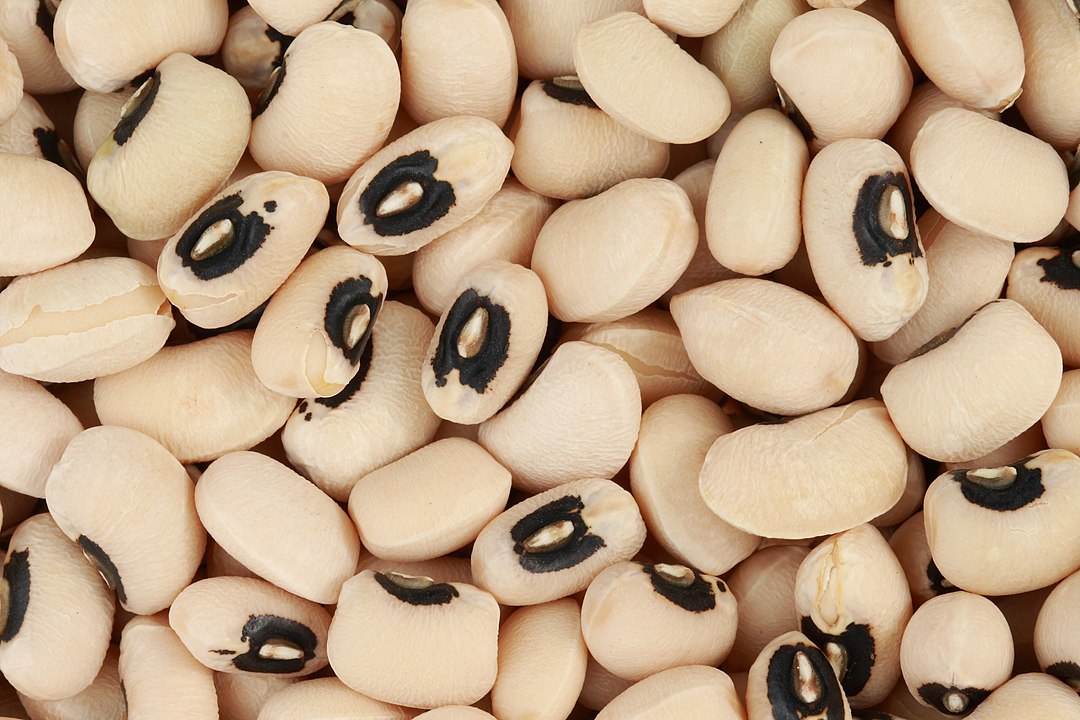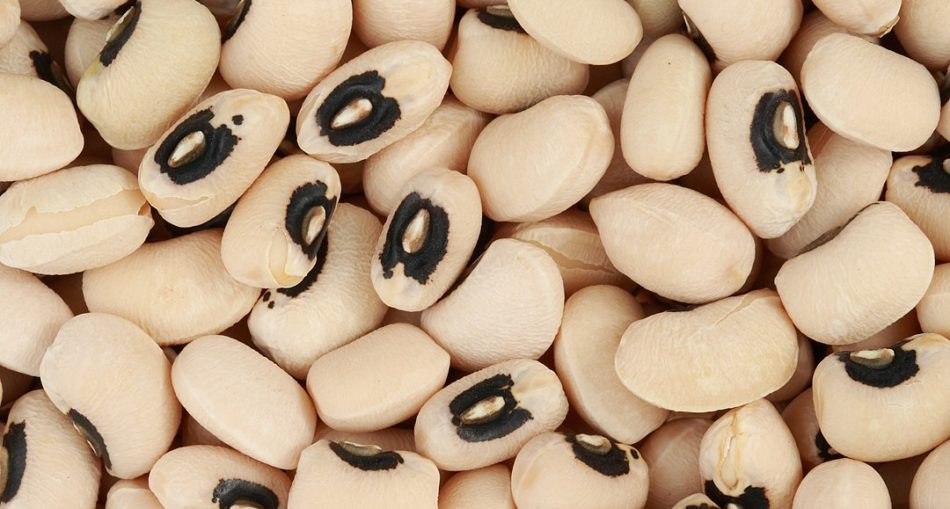The Black-eyed bean is among the world’s oldest farmed plants. Blackeye has originated in Africa but has since spread globally and is fairly common in Brazil, Guyana, the Caribbean, India, and even the United States. The plant is believed to have been brought from Africa to South America during slavery. Today, the Blackeye pea is an important part of Guyanese cusisine being one of the main ingredients to our local Guyanese Cookup. While the bean is called Blackeye in Guyana, the scientific name of Blackeye is Vigna unguiculata. It is also commonly referred to as black-eyed peas, blackeye beans or cowpea, of which it is a variety. In India, it is called chowli and alasande. The legume is rich in nutrients resulting in it becoming a worldwide favourite.

Blackeye – Photo By Toby Hudson – Own work, CC BY-SA 3.0, https://commons.wikimedia.org/w/index.php?curid=18417691
Origin Of Blackeye
The Blackeye bean originated in the southern Sahel of Africa, which is the physical transition of the land from barren the Sahara Desert and the humid savannas to the south. The native Africans found the creeper in these wastelands and saved its best seeds. From then they began tending to the plants. This conflicts with its origin in Asia, which may have been the second domestication and in South America, though not much is known of this. Today, Black-eyed Peas or Blackeye as it is locally known has become widely distributed in the tropics and subtropics.
Interesting Tip
- From the eastern Atlantic Ocean, the Sahel extends through the north of Senegal, southern Mauritania to the Niger in Mali, northeastern Nigeria, south-central Chad and Sudan.
Description Of Blackeye
- Plant – Depending on the variety, the plants are short and bushy or grow like vines, trailing on the ground or climbing vertical support.
- Leaves – Leaves vary in size and shapes according to the varieties of Blackeye.
- Flower – The flowers and seed pods are held by the peduncles, which are about twenty to fifty (20–50) cm in length. As there are numerous species of Vigna unguiculata, their colours vary but include hues of pink, yellow, white, blue and purple.
- Seeds – The pods of cultivated varieties are about ten to one hundred and ten (10-110) cm in length, containing six to thirteen (6-13) seeds, resembling kidneys. Wild cowpea seeds and pods on the other hand are quite small. Like their flowers, the colour and texture of the seeds are varied with a black dot in their center. Seeds can be cream, white, red, green, brown, black or a mixture while their coats are either smooth or rough.
- Roots –Vigna unguiculata has a taproot system reaching depths of nearly eight (8) feet.
Interesting Tip
- Blackeye plants are mostly self-pollinating.
- A peduncle can hold up to four (4) seed pods.
Nutritional Value Of Blackeye
Nutrients of 170 grams of Cooked Black-eyes
- Calories: 194
- Protein: 13 grams
- Fat: 0.9 grams
- Carbs: 35 grams
- Fibre: 11 grams
- Folate: 88% of the DV
- Copper: 50% of the DV
- Thiamine: 28% of the DV
- Iron: 23% of the DV
- Phosphorus: 21% of the DV
- Magnesium: 21% of the DV
- Zinc: 20% of the DV
- Potassium: 10% of the DV
- Vitamin B6: 10% of the DV
- Selenium: 8% of the DV
- Riboflavin: 7% of the DV
3 Healthy Benefits Of Blackeye
- Support weight loss – Blackeye contains protein and soluble fibre which makes you feel fuller during meals and may reduce how much you eat. Protein also reduces levels of ghrelin, a hormone which controls hunger.
- Promote digestive health – Fibre contained in the peas is believed to help prevent acid reflux, stomach ulcers and haemorrhoids. Additionally, the soluble fibre causes initiate the growth of beneficial bacteria in the gut which helps to foster a healthy microbiome.
- Enhance heart health – The consumption of Blackeyes can help to reduce the risks of heart disease.
Traditional Uses Of Blackeye
- Cowpeas were used to make a dish called Hoppin’ John in Southern United States, initially unaccepted but later becoming a traditional dish.
- Blackeye is used to make a local snack in Africa called koki or moin-moin. The beans are mashed into a paste, spiced and steamed in banana leaves.
Culinary Uses Of Blackeye
- Cooked Blackeye beans are combined with spices, meat and left greens in tradition American Southern cuisine.
- Occasionally, cowpeas are roasted, ground, and served as a coffee substitute.
- The seeds are usually cooked and made into stews and curries, or ground into flour or paste.
- The green seeds and leaves Blackeye peas are also consumed.
- Blackeye paste can be used as an alternative to baby formula during weaning.
- In India, the beans are curried and eaten with rice or roti.
About Blackeye
Black-eyed peas are packed with nutrients, containing a large number including protein, fibre, copper, iron and thiamine. The bean can be prepared in a number of ways, cooked into curries and stew and even into flour! In addition, because of the sustaining qualities of Blackeye combined with its richness in nutrients, this legume is popular around the world.
Article References
- http://agriculture.gov.gy/wp-content/uploads/2016/01/cowpea.pdf
- https://en.wikipedia.org/wiki/Cowpea
- https://www.nap.edu/read/11763/chapter/7
- https://www.biorxiv.org/content/10.1101/2020.07.08.193995v1.full
- https://www.healthline.com/nutrition/black-eyed-peas-
- nutrition#:~:text=Nutritional%20profile,copper%2C%20thiamine%2C%20and%20iron.
- https://www.nap.edu/read/11763/chapter/7#107
Discover more from Things Guyana
Subscribe to get the latest posts sent to your email.







